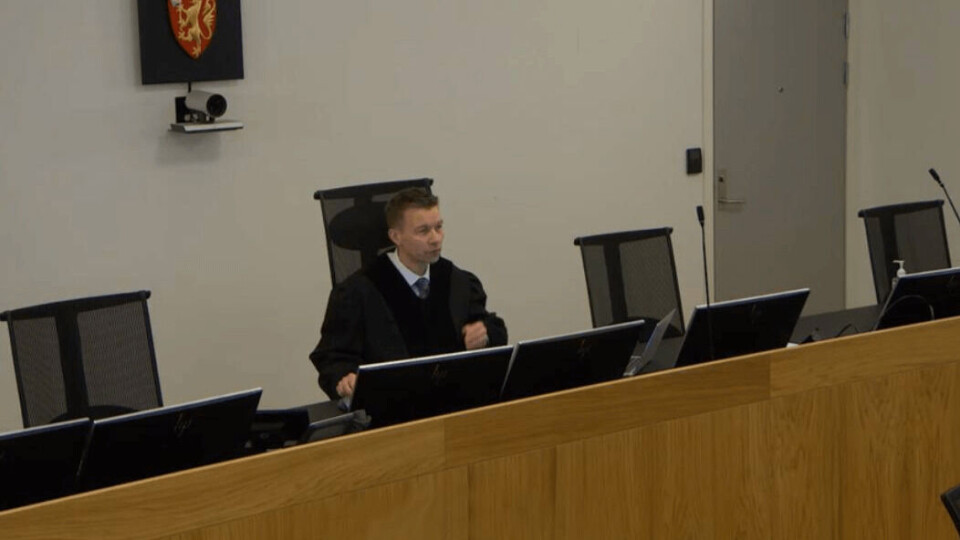
Norway salmon farmers lose ‘traffic light’ court fight
Salmonid farmers who took the Norwegian state to court over a decision to order a 6% reduction in their biomass under the country’s “traffic light system” have lost their case.
The farmers in production area 4 (PO4) lost on all points in the case before district judge Jørn Lasse Refsnes in Sogn og Fjordane District Court.
The salmon farmers, who include Mowi and Lerøy, were ordered to legal costs of NOK 1,779,027 (£150,000).
The case centred around the traffic light system, which divides the country’s coast into 13 defined areas, from area 1 in the south to area 13 in the far north. The areas are given a green, yellow and red traffic light designation depending on the perceived risk of sea lice-induced mortality among wild salmon. Capacity is adjusted by 6% upwards (green) or down (red). In yellow areas, capacity is frozen.
The 25 farming companies in PO4 claimed the scientific basis for a red-light designation for the area was weak, and that production levels should be maintained.
Lack of authority?
The farmers had approached the issue from several angles. One of them was whether the decision was based on the Aquaculture Act § 9 third paragraph.
“The fish farmers have argued that the decision is invalid because it has no legal basis, because the conditions in the Aquaculture Act § 9 third are not met. It is pointed out that it has not been proven that the reduction was ‘necessary for the sake of the environment’,” the 68-page judgement states.
“After an overall assessment, the court concludes that the assessment of whether the decision was ‘necessary from the point of view of the environment’ is at the discretion of the administration.”
Exercise discretion
Questions were also raised as to whether the Ministry of Trade, Industry and Fisheries had adhered to mandatory guidelines for the exercise of discretion.
“The court thus finds it not probable that socio-economic considerations were not assessed by the Ministry. The preparatory work does not provide mandatory guidelines for how socio-economic consequences are to be weighted. This is at the Ministry’s discretion,” states the judgement.
The court is of the opinion that section 8 of the production area regulations cannot be interpreted as a guideline that in assessing the environmental condition of a production area, one should only take into account mortality that can be traced directly to fish farming activities.
“The court does not find that other mandatory guidelines have been set for the discretion. The decision is therefore not invalid due to non-compliance with mandatory guidelines.”
Abuse of power?
The farmers had also argued that the decision was arbitrary and could have been regarded as an abuse of power, which would have invalidated it.
“The court finds it clear that the decision is not arbitrary. The decision was made after a thorough case preparation and according to clearly defined criteria, in line with the traffic light system,” ruled the judge.
Procedural error?
The farmer had also stated that the decision should be annulled due to procedural errors.
“The court cannot see that the procedure described here is contrary to the Public Administration Act § 37. In the court's view, it must be clear that the expert group (that advises on the traffic light designations) must have time to assess and apply new knowledge in the report, and that the steering group and the ministry then must have a certain amount of time to make their assessments and possibly obtain additional information. The court will also refer to the explanation from witness Rønbeck, that the ministry received and assessed new input right up to the time of the decision. As an example of this, Rønbeck referred to the memorandum from the expert group of 15 November 2019, where the expert group assessed new information on the time of migration that was sent on 1 November of the same year. The court finds that the Ministry, through the case preparation, had a sufficiently updated assessment basis.”
Was the decision based on the wrong facts?
The farmers had argued that the decision was invalid due to significant errors and deficiencies in the factual basis on which the ministry built.
“It has been pointed out [by the farmers] that one of the models has assumed that the smolt spends 40 days wandering out from the rivers to the sea [and that this is] significantly too much and entails a much longer exposure time for lice infection than in reality. The court refers to the explanation from Vollset that the expert group assumes an emigration speed of 12.5 km per day, and thus a significantly shorter emigration time than 40 days.
“On the basis of the evidence presented, the court does not find it probable that the expert group's conclusions are based on incorrect factual basis regarding emigration from the rivers.”
The judgement continued: “The court thus finds it probable that the Ministry would have withdrawn the precautionary principle if it had assessed the factual basis of the environmental condition as somewhat less certain than it did. How such an assessment would have turned out, the court has no basis for going into.”
Did the decision violate the Constitution?
The farmers argued that the decision was not binding because it was in violation of the retroactive prohibition in section 97 of the Constitution.
“The court will point out that it does not find it possible to emphasise that a red light entails a postponed opportunity for future offers of growth, as the farmers have argued. Offer of growth presupposes that the environmental situation has been found to be acceptable (green light), cf. the production area regulations § 11. This was not the situation in PO4, and it is uncertain if and when this will be the situation in the future.
“The court emphasises that this is an interference with financial benefits, and not with personal freedom or rights of a welfare nature. The traffic light system gave the farmers the opportunity to assess the possibility of adjustments through annual colourings, and they had six months to comply with the adjustment decision. The decision was also made on the basis of criteria that are the same for all fish farmers in the country.
“After an overall assessment, the court finds that the intervention is not special or clearly unreasonable or unfair, and that the decision is not in violation of Section 97 of the Constitution.”
In violation of human rights?
The farmers also argued that the decision is not binding because it is contrary to ECHR P1-1 - the European Convention on Human Rights.
Here, too, the farmers did not prevail.




















































